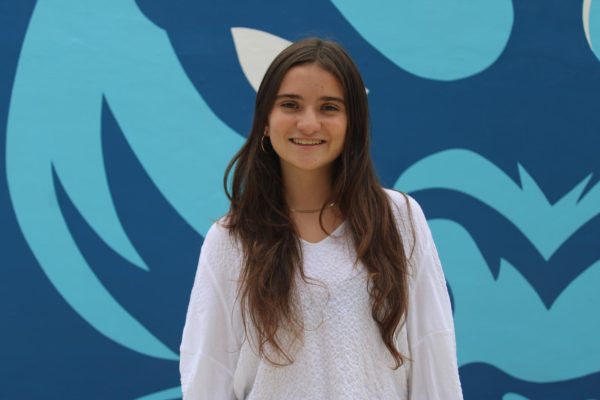More Than a Month: Hispanic Heritage at Palmetto
October 5, 2022
Each year, from Sept. 15 to Oct. 15, American citizens with Hispanic or Latino roots observe National Hispanic Heritage Month — a celebration of their histories, cultures and contributions to the world.
Originally introduced in 1968 under President Lyndon B. Johnson as Hispanic Heritage Week, President Ronald Reagan extended the holiday over a 30-day period in 1988, passing the month-long observance into law on Aug. 17, 1988.
The month begins with celebrations of independence and liberty for various cultures, as Sept. 15 marks the Independence Days of Costa Rica, El Salvador, Guatemala, Honduras and Nicaragua. Furthermore, Sept. 16 marks Mexican Independence Day, and Sept. 18 marks Chilean Independence Day.
While the U.S. celebrates Hispanic Heritage Month by hosting various community gatherings, art shows, festivals and conferences, Hispanic and Latino students at Miami Palmetto Senior High believe that their heritage stretches far beyond just a month and means more than checking a box in a survey.
“What our culture represents makes me feel proud. Even from the dances, what we eat as well – it makes me really proud to be Puerto Rican,” MPSH sophomore Eddie Rodriguez said.
For Rodriguez, moving away from Puerto Rico in 2015 meant leaving behind his childhood in the hopes of better opportunities in the U.S..
“As a kid, I lived with my grandparents in Bayamón. Every day [I would] wake up, my grandmother would make Cafecito, and believe it or not, my grandparents would make Mofongo for breakfast, with a side of egg or jamón. And I remember as a kid, every morning, my brother and I would go out into the streets and hang out, be with our friends. Every weekend, my family would go on a trip to Yauco and vacation in my great great grandparent’s house there. We would hang out there, and I would help my great grandma go out to la Pulguera, the flea market, and help her sell coffee beans, root beer and Malta,” Rodriguez said. “The reason why I left Puerto Rico, even though it sounds fun – and it really was fun –- was because the whole education system was not the best, infrastructure wasn’t it, crime was very bad, and my mom pictured a better life living here, and it’s actually going really well. It just makes me really sad to see my island, mi isla de encanto, fall apart like that.”
More specifically, the MPSH Hispanic and Latino community represents about 56 percent of the school’s student body, with five out of seven of the school’s administrative officials being of Hispanic descent. Miami’s diverse cosmopolitan community and vast Hispanic population defines the celebration throughout the city.
“Yes, I do feel that [the Hispanic community] is well represented since the population of Miami is full of Cubans, due to the Cuban immigration starting in the 1960s. The music is definitely displayed by people like Pitbull, who is Cuban, and even the places like Calle Ocho that are ethnic enclaves to Cuban culture, are all over Miami,” MPSH sophomore and Spanish National Honor Society treasurer Alessandra Falcon said. “I also feel like when people think of Miami, they think of crazy parties with Cubans.”
Falcon’s Cuban and Spanish culture manifests itself through more than just a language and plays a large role in her everyday life.
“My Hispanic heritage is from my father’s side where he is a descendant of Cuban and Spaniard culture. Like other families, we enjoy getting together and having specific meals like vaca frita, ropa vieja and enchilado de camarones,” Falcon said. “Dancing is also a huge part since we always listen to salsa mainly. Fishing and going to the beach is another thing that I would agree many Cuban families do.”
On top of providing students access to French, Italian, Chinese, American Sign Language and Japanese classes, MPSH offers all levels of Spanish classes, with the highest being AP Spanish Language and AP Spanish Literature.
“Especially in my AP Spanish classes, there are many more students. This year they gave me, in total, three classes, and students that would like to enter cannot because the classes are full,” AP Spanish Language and Literature teacher and sponsor of Spanish National Honor Society Adalberto Martín said.
For Martín, Hispanic Heritage Month plays a key role in uniting Miami’s Hispanic community and hopes to bring that sense of union to MPSH’s campus.
“The month is something big. It’s something that [Hispanics] identify with and it unites us. Especially through the language, as now we have almost the same idiosyncrasy as everyone,” Martín said. “I am also going to be in charge of ensuring that we direct our year to planning events, drives and collections for the less fortunate Latino population, that kind of thing, and our first meeting is coming up soon.”
Throughout history, Miami has been a melting pot of culture and diversity. With a large part of Miami’s popular culture originating in South American and Caribbean Spanish-speaking regions, these cultures have influenced the everyday lives of nearly every Miami resident. Whether it is hearing Bad Bunny on the radio, seeing people salsa dancing in the streets or dining at Café Versailles, Pollo Tropical, Havana Harry’s or Casacuba, Miami is the embodiment of Hispanic culture and tradition — as well as many other nationalities and cultures.







